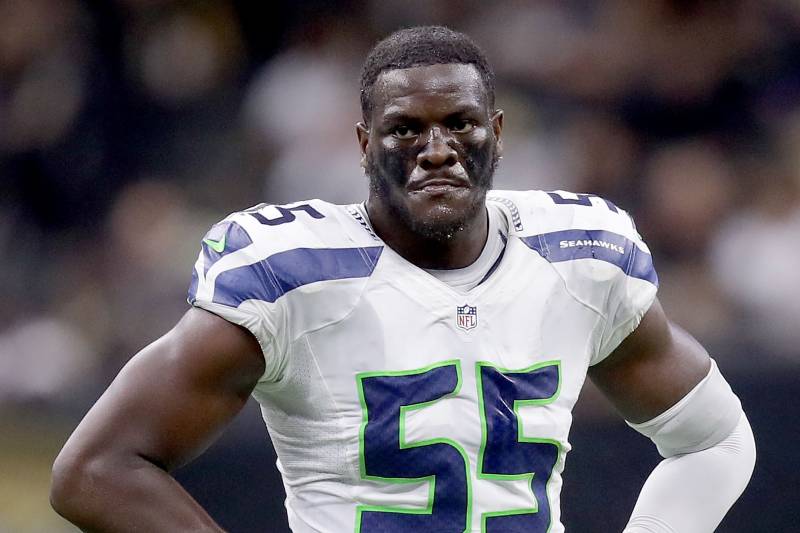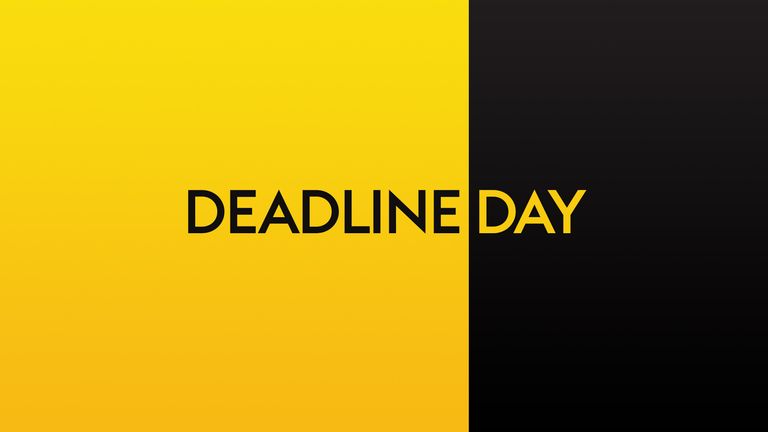I couldn’t decide whether to include a Frank Clark trade or not in this projection.
Poona Ford, Rasheem Green, Quinton Jefferson, Branden Jackson, Nazair Jones, Jacob Martin, Jamie Meder, Nate Orchard, Cassius Marsh, Jarran Reed.
That’s Seattle’s D-line without Frank Clark.
There’s a pass rush problem for the Seahawks if they trade Clark. A big problem.
And that’s why I still think that unless they get a fantastic offer he’ll play on the franchise tag (or sign a new contract) in 2019.
Even so — Michael Lombardi is the latest voice this week to say he’s hearing rumblings of a potential trade. We’ve been here before of course — with Earl Thomas and Richard Sherman. Will things be different this time?
It’s still hard to believe. Only a few weeks ago Pete Carroll was defiantly stating Clark would be a Seahawk. Nothing has really changed since then. The franchise tag was expected, Demarcus Lawrence and Trey Flowers getting paid big money was distinctly possible and the Seahawks would’ve hoped to get a deal done with Russell Wilson.
Even with a great D-line class this year it’s difficult to imagine Seattle’s average pass rush not taking a step backwards minus Clark.
For that reason I think any deal likely has to include second round compensation plus a swap of first round picks. The Seahawks need to be within range of the top pass rushers in this draft to move Clark and they need to be able to pad out their board.
I decided ultimately not to include a Clark trade. Here’s the mock in full with details below:
First round
#1 Arizona — Kyler Murray (QB, Oklahoma)
#2 San Francisco — Nick Bosa (DE, Ohio State)
#3 Green Bay (via NYJ) — Quinnen Williams (DT, Alabama)
#4 Oakland — Ed Oliver (DT, Houston)
#5 Tampa Bay — Devin White (LB, LSU)
#6 New York Giants — Josh Allen (EDGE, Kentucky)
#7 Jacksonville — T.J. Hockenson (TE, Iowa)
#8 Detroit — Rashan Gary (DE, Michigan)
#9 Washington (via BUF) — Drew Lock (QB, Missouri)
#10 Denver — Jonah Williams (T, Alabama)
#11 Cincinnati — Daniel Jones (QB, Duke)
#12 New York Jets (via GB) — Andre Dillard (T, Washington State)
#13 Miami — Dexter Lawrence (DT, Clemson)
#14 Atlanta — Montez Sweat (EDGE, Mississippi State)
#15 Buffalo (via WAS) — Christian Wilkins (DT, Clemson)
#16 Carolina — Devin Bush (LB, Michigan)
#17 New York Giants (via CLE) — Jawaan Taylor (T, Florida)
#18 Minnesota — Cody Ford (T, Oklahoma)
#19 Tennessee — Clelin Ferrell (DE, Clemson)
#20 Pittsburgh — Byron Murphy (CB, Washington)
#21 Kansas City (via SEA) — D.K. Metcalf (WR, Ole Miss)
#22 Baltimore — Erik McCoy (C, Texas A&M)
#23 Houston — Chris Lindstrom (G, Boston College)
#24 Oakland — Dwayne Haskins (QB, Ohio State)
#25 Philadelphia — Brian Burns (EDGE, Florida State)
#26 Indianapolis — Rock Ya-Sin (CB, Temple)
#27 Oakland (via DAL) — Greedy Williams (CB, LSU)
#28 LA Chargers — Noah Fant (TE, Iowa)
#29 Arizona (via SEA) — Marquise Brown (WR, Oklahoma)
#30 New York Jets (via GB) — Garrett Bradbury (C, NC State)
#31 LA Rams — Josh Jacobs (RB, Alabama)
#32 New England — Jeffery Simmons (DT, Mississippi State)
Second round
#33 Seattle (via ARI) — Terry McLaurin (WR, Ohio State)
#34 Indianapolis (via NYJ) — N’Keal Harry (WR, Arizona State)
#35 Oakland — Irv Smith Jr (TE, Alabama)
#36 San Francisco — Justin Layne (CB, Michigan State)
#37 New York Giants — Will Grier (QB, West Virginia)
#38 Jacksonville — L.J. Collier (DE, TCU)
#39 Tampa Bay — Lonnie Johnson (CB, Kentucky)
#40 Buffalo — Dawson Knox (TE, Ole Miss)
#41 Denver — Johnathan Abram (S, Mississippi State)
#42 Cincinnati — Kaleb McGary (T, Washington)
#43 Detroit — Juan Thornhill (S, Virginia)
#44 Green Bay — A.J. Brown (WR, Ole Miss)
#45 Atlanta — Dalton Risner (T, Kansas State)
#46 Buffalo (via WAS) — Parris Campbell (WR, Ohio State)
#47 Carolina — Darnell Savage (S, Maryland)
#48 Miami — Dru Samia (G, Oklahoma)
#49 Cleveland — Greg Little (T, Ole Miss)
#50 Minnesota — Jerry Tillery (DT, Notre Dame)
#51 Tennessee — Chauncey Gardner-Johnson (S, Florida)
#52 Pittsburgh — Deebo Samuel (WR, South Carolina)
#53 Philadelphia (via BAL) — Dre’Mont Jones (DT, Ohio State)
#54 Houston (via SEA) —
Tytus Howard (T, Alabama State)
#55 Houston — Isaiah Johnson (CB, Houston)
#56 New England (via CHI) — Kahale Warring (TE, San Diego State)
#57 Philadelphia — Marquise Blair (S, Utah)
#58 Dallas — Trysten Hill (DT, UCF)
#59 Indianapolis — Taylor Rapp (S, Washington)
#60 LA Chargers — Bobby Okereke (LB, Stanford)
#61 Kansas City — Joe Jackson (DE, Miami)
#62 New Orleans — Deandre Baker (CB, Georgia)
#63 Kansas City (via LAR) — Elgton Jenkins (C, Mississippi State)
#64 New England — Zach Allen (DE, Boston College)
The trades explained
Green Bay trades #12 & #30 to the Jets for #3
The Packers make a bold move to go up and get an elite talent from this draft (Quinnen Williams) to complete their defense. The Jets are reportedly desperate to move down.
Washington trades #15 & #46 to Buffalo for #9
The Redskins are going to spend the next two years paying a fortune to Alex Smith. They need to add a young quarterback. Rather than trade for Josh Rosen, they move up here to get Drew Lock.
Kansas City trades #29, #93 & #216 to Seattle for #21
The Chiefs have a big call to make on Tyreek Hill and might decide to jump ahead of Baltimore to ensure they get whoever is their preferred receiver in this class. D.K. Metcalf’s downfield speed would be a good fit with Patrick Mahomes.
Arizona trades #33 & #104 to Seattle for #29
The Cardinals trade in front of the Jets (who could be in the market for a weapon for Sam Darnold) to reunite Kyler Murray and Marquise Brown.
Thoughts on the Seahawks
A lot of the top defensive line talent is gone by the time the Seahawks are on the clock. Thus, they have to look at receiver and nickel. This isn’t a big problem considering the depth on the D-line and options available throughout this draft (plus in this projection they keep Frank Clark).
The Seahawks also invited Allen Bailey, Corey Liuget and Al Woods for a visit. They previously met with Nick Perry. This could be a market they tap into after the draft.
They’ve shown interest in N’Keal Harry and his 22% scoring rate on deep targets is an appealing statistic for this offense. However, this time I paired them with Terry McLaurin. He’ll have an immediate impact on special teams, he loves to block, he has a fantastic attitude and he performed exceptionally well at the Senior Bowl and combine. McLaurin has a first-rate personality and could be Doug Baldwin’s heir apparent. They already share an agent.
It’s difficult to judge McLaurin’s range. Many have him graded in the middle rounds. There’s also been talk of him going in round one. It’s pretty likely the Seahawks like McLaurin given his playing style and athletic profile but that doesn’t necessarily mean they’ll value him this early. That said — the player drafted at #20 will have a similar rating to the player drafted at #50 this year. It’s that type of class. You just have to pick your poison.
Urban Meyer had the following to say about McLaurin’s special teams value:
“Terry might have taken over the title as the best (gunner) I’ve had… It’s with great reverence I say that. You go back all the way to Brad Roby, to Devin Smith, to Denzel Ward, Gareon Conley. Terry is as good as there is.”
And here’s the view of an anonymous personnel man:
“He is like the anti-wide receiver… Zero diva. He understands special teams, and that’s how you get on the field. It’s just his whole mindset. Some guys say that and it’s bull—-. This kid really gets it.
“He’s sharp. He’s at a different level. He’s so far above most college players when it comes to how he presents himself. There’s no way you miss on this guy. I don’t know if he’ll ever be a Pro Bowler (at wide receiver) but he’s going to be a really dependable player for a long time. There’s no downside.”
One thing that’s interesting is the sheer number of defensive backs that are visiting the Seahawks. Justin Layne took an official-30 visit today (the final day for visits). Darnell Savage, Juan Thornhill, Corrion Ballard, Derrek Thomas and Sean Bunting also made a trip to Seattle and we know they met with Chauncey Gardner-Johnson.
The Seahawks don’t take defensive backs early but they do need more depth, competition and quality. It could mean nothing but it’s worth raising.
Seven round Seahawks projection
R2 (#33) — Terry McLaurin (WR, Ohio State)
R3 (#85) — Charles Omenihu (DE, Texas)
R3 (#93) — Marvell Tell (S, USC)
R4 (#104) — Armon Watts (DT, Arkansas)
R4 (#125) — Kaden Smith (TE, Stanford)
R5 (#160) — Greg Gaines (DT, Washington)
R6 (#216) — Derrek Thomas (CB, Baylor)
Notes on each pick
R2 (#33) — Terry McLaurin (WR, Ohio State)
Special teams dynamo, willing blocker, fantastic athlete, playmaker.
R3 (#85) — Charles Omenihu (DE, Texas)
He has the size and length to play base-end and his short shuttle (4.36) will appeal.
R3 (#93) — Marvell Tell (S, USC)
Fantastic agility testing and length makes him an appealing hybrid DB.
R4 (#104) — Armon Watts (DT, Arkansas)
Terrific length and power to anchor vs the run with plus pass-rushing upside.
R4 (#125) — Kaden Smith (TE, Stanford)
One of the few TE’s in this class to run a sub-7.10 three-cone.
R5 (#160) — Greg Gaines (DT, Washington)
The Seahawks are reportedly interested in Gaines.
R6 (#216) — Derrek Thomas (CB, Baylor)
A converted receiver, Thomas looked like a Seahawks corner at the combine.
You can now support Seahawks Draft Blog via Patreon by clicking the tab below.





